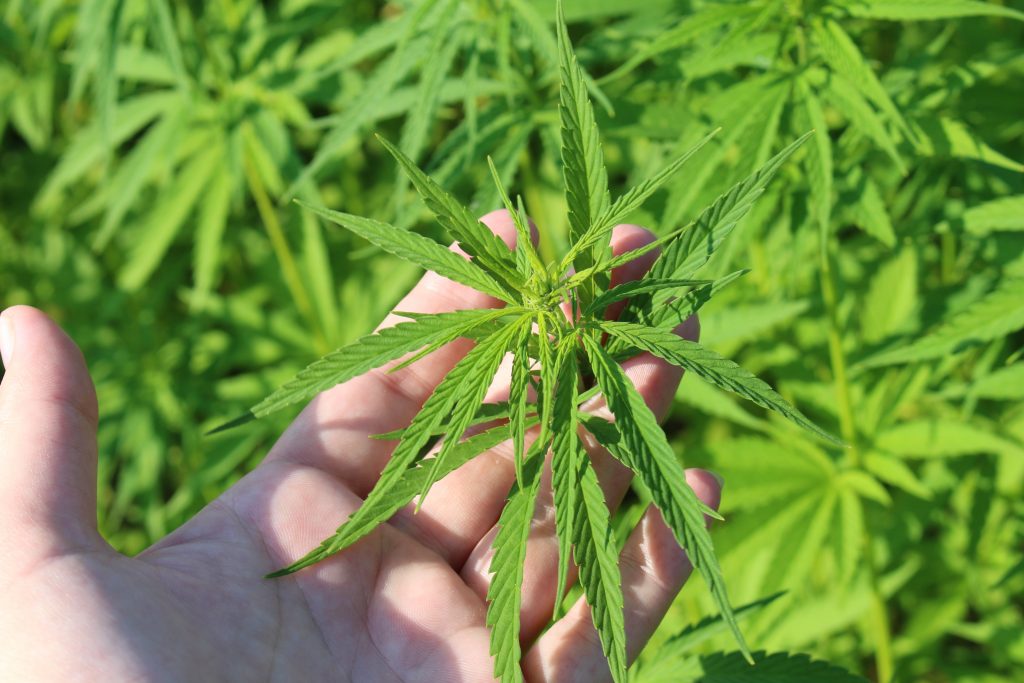
(UF/IFAS) — Since the Florida State legislature authorized Industrial Hemp Pilot Projects for land grant institutions in 2017, the goal at the University of Florida Institute of Food and Agricultural Sciences (UF/IFAS) has been to seek scientific answers that will help growers and investors decide whether to take a chance on hemp and how to do that well informed.
At the center of research to help determine whether hemp can serve as a viable alternative crop for Florida, its regional risk factors for growing, and its potential for agricultural sustainability in the state, is UF/IFAS. Industrial hemp is a Cannabis sativa plant with less than 0.3 percent of THC, which is the psychoactive chemical that at a higher level defines marijuana. Hemp has been cultivated for more than 10,000 years as a fiber and grain crop. Modern hemp production could be used for fiber, seed production and oil extraction for CBD. A look back at 2019, the first of a two-year research plan, illustrates a strong list of milestones and objectives reached at UF/IFAS for the pilot project.
“We can account for a successful year, having accomplished what we set out to do in our research plan and more,” said Zachary Brym, assistant professor of agronomy at the UF/IFAS Tropical Research and Education Center and research lead for the pilot project effort. “After obtaining necessary approval for the pilot and program funding for the initial research objectives in 2018, we got to work in 2019. We executed a variety of field trials and expanded the scope of the program beyond the original pilot program objectives.”
“This year has been a critical part of the process of laying the groundwork and obtaining answers to the uncertainties for growing industrial hemp in Florida,” said Brym. “As this crop has not been grown here before commercially, the identification of best practices and best varieties will determine some of the unknown factors that go along with the growth of a new crop.”
Research objectives in the two-year plan were designed to identify hemp varieties suitable for planting in Florida’s various environments throughout the state and develop hemp management practices and cropping systems that are economically viable for Florida. The objectives also included assessing the risk of hemp as an invasive plant that could escape cultivation and potentially pose a risk to Florida’s landscapes.
In 2019, the UF/IFAS Hemp Pilot Project established variety trials representing various uses (fiber, grain and CBD) from regions of origin throughout North America, Europe and Asia. Since May 2019, Brym has planted 46 varieties of industrial hemp.
The trials were planted outdoors at three UF/IFAS research locations, including the Tropical Research and Education Center in Homestead, the Agronomy Forage Research Unit in Hague and the North Florida Research and Education Center in Quincy.
“Our first locations represented the broad range of environments, climates and farming regions of Florida providing the ability to assess the best management practices, cropping systems and potential risks of growing in those regions,” said Brym.
Some of the first seedlings that were planted at the Homestead, Quincy and Hague facilities grew to 12-foot hemp plants in a matter of 60 to 90 days. Some only grew a few inches.
According to Brym, research has expanded with industrial hemp currently being grown at eight permitted UF/IFAS locations. Cultivation includes greenhouse propagation as well as outdoor planting. Following the initial screening of varieties, additional trials were planted to improve seed emergence, pre-plant seed treatments, herbicide control and soil-moisture management. What started with a core team of seven faculty members from three departments and the College of Pharmacy, has expanded to 20 faculty members from a greater variety of disciplines.
An invasion risk assessment at the Bivens Arm research site, located near UF’s main campus in Gainesville, is assessing natural conditions and habitats where hemp might establish and spread outside of cultivation. The study looks at the risk of any hemp plants becoming invasive threats to Florida’s landscapes.
Researchers identified pests and diseases on hemp outdoor trials and had two propagation greenhouses under quarantine for pests that appeared on transplants from outside of the state after initial delivery inspections. The need for proper drainage was another challenge discovered during the various trials.
“The goal of the project, as we continue to move forward in the research, is to produce crops resistant to environmental complications while maximizing both plant health and yield,” said Brym.
Throughout 2019, Brym and his team conducted a series of standing-room only workshops, field tours and research activities for growers, interested community members and industry project partners. UF/IFAS faculty provided an update about the industrial hemp program at UF, facilitated discussion about the direction of the new industry, and identified how interested audiences can get involved in the program.
“Our research efforts to date have made great strides in revealing information the industry needs to know to determine sustainability all in the face of needing continued industry support through partnerships investing in research,” explained Brym. “We have met the milestones that were set for the first year, which allows us to move forward with continued research in 2020 and beyond.”
Per state statute, the UF/IFAS Industrial Hemp Pilot Program has two full years from May 1, 2019 to complete the research and report on the findings of the pilot project providing recommendations to the state of Florida and commercial growers interested in growing industrial hemp in Florida. The fact remains that Florida’s heat, humidity and pest problems are an entirely new environment for industrial hemp.
Time and research will lead to additional information necessary for the initial design and economic assessment of growing hemp across Florida’s various regions. To stay up to date on new developments, visit the UF/IFAS Industrial Hemp Pilot Project.
Source: University of Florida Institute of Food and Agricultural Sciences









